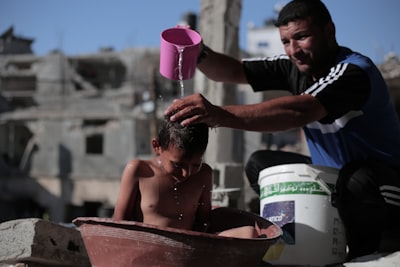Summary
On July 12, 2025, a tragic incident near an aid distribution site in southern Gaza resulted in the deaths of 24 people, according to Nasser hospital. Witnesses claimed Israeli troops opened fire as Palestinians tried to access food; the Israel Defense Forces (IDF) denied causing injury but stated that warning shots were fired at perceived threats. The BBC, unable to independently verify these reports or access Gaza, referenced unverified videos and interviews with witnesses and medical personnel. The ongoing blockade, intermittent military operations, and tightly controlled aid deliveries have created dire shortages of food, medicine, and fuel, exacerbating a humanitarian crisis.
The UN has documented almost 800 aid-related deaths, many occurring near distribution sites operated by the Gaza Humanitarian Foundation (GHF) or UN convoys. Accusations of bias, dispute over casualty numbers, and heated denial of responsibility have underscored international attempts to alleviate suffering. This latest incident occurs within the broader context of Israel's military campaign in response to Hamas's October 2023 attack and the ensuing devastation across the Gaza Strip.
Analysis
The Gaza Strip’s aid crisis is not simply a story of scarcity—it is also one of extreme vulnerability, contested narratives, and broken systems of accountability. The incident near Nasser hospital exemplifies the tragic consequences that arise when life-saving humanitarian assistance intersects with intense military conflict and mutual mistrust.
Underlying causes stem from over a decade of blockade, acute militarization, and a collapse of trust. With both Israel and Hamas accusing each other of violating principles of distinction and proportionality, civilians are often caught in the crossfire—literally and rhetorically. The description of GHF aid sites being operated by US private security contractors, located within military zones, raises serious questions about the militarization of aid and the risks for Palestinians simply seeking food.
Bias and missing context are clear in both the reporting and the realities on the ground. Israel's restriction on international media access leaves much of the narrative dependent on local sources—often linked to interested parties—creating an opaque environment for establishing facts. NGOs and international bodies are left to rely on indirect evidence—videos, survivor testimonies, and health ministry reports—each with its own sources of possible bias or manipulation.
Ethically, this story lays bare the collective failure to protect civilians and facilitate even the basic necessities of life. Both the intended safeguards (like warning shots) and the accountability mechanisms (like UN monitoring) have proven tragically inadequate for the scale of the suffering.
Discussion
The situation matters beyond its immediate humanitarian costs. Gaza’s tragedy reveals the uncomfortable paradoxes at the heart of international humanitarian law: How do you deliver aid amidst war? Who ensures accountability when violence and humanitarian delivery are physically and morally inseparable?
This is not the first time famine has intertwined with conflict, nor is Gaza the only arena where aid becomes entangled in political and military objectives. The presence of foreign private security at aid sites, disputed casualty numbers, and competing narratives recall similar crises: from Yemen, where blockades have led to famine, to South Sudan, where aid workers are themselves attacked.
Critically, the lack of independent verification, exclusion of media, and the politicization of casualty figures further erodes global trust—not just in the warring parties, but also in the international community’s ability to respond justly. Are tools like international monitoring, third-party oversight, or UN pressure enough? What would a truly neutral and effective aid system even look like in such a conflict?
Ultimately, these questions cannot be resolved by statistics or even by “winning” the fight over narrative. They demand a reckoning with the cost of treating humanitarian need as collateral damage to military and political aims—and a commitment to ensuring that, even in war, lines must not be crossed. As aid convoys continue moving through danger and Gazans risk their lives for food, the world faces a stark moral and political test with no easy answers.

Comments
No comments yet. Be the first to comment!